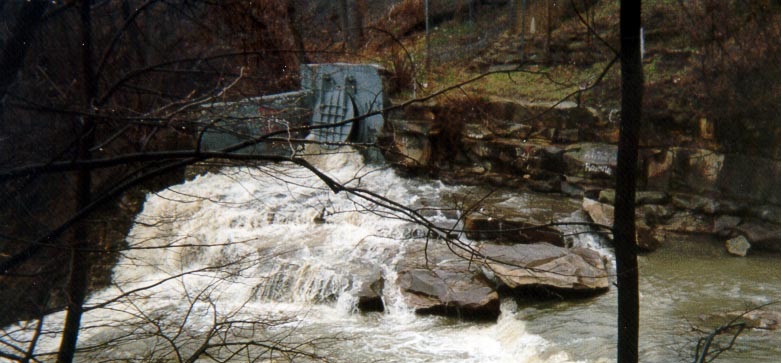Combined sewers and combined sewer overflow (CSO) control

A combined sewer overflow may discharge sewage and stormwater during heavy rains.
What is a combined sewer?
Cleveland’s earliest sewers are “combined sewers” that carry sanitary sewage (from your house), stormwater (from rain and melted snow), and industrial waste in a single pipe. When indoor plumbing was first developed, the pipes from residences were fed into the original storm sewers, which would empty raw sewage directly into area streams and Lake Erie. Thankfully, treatment plants were built in the 1910s and 1920s to clean the dirty water before it enters the environment.
What is a combined sewer overflow?
When heavy storms produce large volumes of surface runoff, combined sewers may not be able to handle the increase. For this reason, rather than having sewage back up into homes or treatment plants, relief points were designed in the system to release the combined flow to the environment. Those points are called combined sewer overflows, or CSOs.
Progress since, and progress underway
NEW: Learn about our plans for the Edgewater Beach combined sewer overflow
In the 1970s, more than 9 billion gallons of combined sewage reached Lake Erie every year. By 2000, that volume was cut in half through a combination of new construction and treatment plant improvements.
The Sewer District launched Project Clean Lake in 2010, a 25-year plan for huge storage tunnels, smart green infrastructure, and treatment plant improvements to manage higher flow volumes and reduce overflows. These projects will offer relief for overloaded pipes and keep more stormwater out of the combined sewer system, which can also help local communities alleviate sewer backups and flooding problems.
